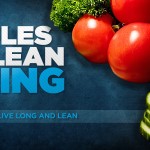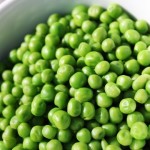The best defense against failure is good information. These debunked fitness myths will help you recognize right from wrong and truth from lies! Don't hit the gym without reading this! Starting a fitness journey can be intimidating, especially if you're going in without any previous study. If you go to the Internet to find information, you might find yourself smack-dab in the middle of bad logic and bad ideas. It's difficult to sort out the fact from the fiction—especially when the fiction … [Read more...]
10 Rules of Clean Eating
10 Rules of Clean Eating: Live By Them and Live Long and Lean Looking for a more principled way to eat? Here's your road map to better health and improved fitness. Take a good, long look at that fast-food cheeseburger. Every item on it, from the bun to the sauce, was processed in a factory and created in a laboratory. It's packed with enough artificial colors and preservatives to make it look as pretty as a picture. But does it qualify as "eating clean?" Yeah, right. So what is clean … [Read more...]
What is Whey?
What is Whey? a report by: David Marshall, Jr., O.D., Ph.D. WHEY PROTEIN REPORT A. What is WHEY? Whey is a by-product of cheese manufacture resulting from drainage of liquid from the curd. It contains lactose, protein, ash, and lipids. The protein concentration at this stage of processing is about 67 protein. Whey proteins can be fractioned and concentrated via a process called micro-filtration to yield whey protein concentrates (WPC). The protein concentration can be as high as ~ 95% … [Read more...]
Whey Protein Facts and Application
Whey Protein Facts and Application, Dr. Lawrence Sosna The word Protein means “first substance”. Our first protein food was found in our mother’s milk. Milk is the only food designed specifically to optimally sustain the life of a mammal. In fact, the root word for nutrition means to suckle. As a species, we would not have survived if not for the nutrition and protection mother’s milk offers. Whey is one of the two protein groups found in milk. It is a liquid complex consisting of a wide … [Read more...]
Soy vs Whey
Soy Vs. Whey, Carlon M. Colker, M.D. Proteins Duke it Out for Prominence, but Only One is a True Champion Carlon M. Colker, M.D. Although debated for years, it is now not merely a widely held belief, but an accepted fact, that athletes and people who exercise need more protein than sedentary non-exercising individuals.1-9 But as protein has gained in popularity and finally assumed its rightful place as king of the macronutrients, a new war has begun. The battlefield has been drawn, pitting … [Read more...]
Whey vs Pea
A new protein has hit the market recently and has been slated as a good alternative to whey protein. We’re talking about Pea Protein. How does this protein stack up against a high quality whey protein concentrate like Well Wisdom’s Proserum®, and are you getting all of the same benefits that whey protein is so noted for? Pea protein is made from a type of pea known as ‘pisum sativum’, also known as a snow pea, sugar snap pea or field peas. It’s becoming more and more popular with consumers who … [Read more...]
UDO Choice Oil Blend
Udo Choice Oil Blend “Special Spring Sale Regular $47.00…….. Sale $37.00” What are Essential Fats? Scientists have given essential fats (a.k.a. essential fatty acids or EFAs) their name because the body must have them to survive, but cannot synthesize them from any other substance we eat, so a direct food source is required. Hence, the name essential. There are many kinds of fats, but only two kinds of essential fats: omega 3 (omega-3 or w3) and omega 6 (omega-6 or w6), both of which are … [Read more...]
What Causes Age-Related Belly Fat?
While it may seem inevitable, there are some things you can do to fight age-related belly fat. Do your birthdays coincide with an extra notch added to your belt? You’re not alone. Unfortunately, many of the culprits that contribute to weight gain increase with vengeance as we age. Even worse is the accompanying muscle loss. Research shows that weight and BMI gradually increase during most of adult life, reaching peak values between 50 and 59 years of age in both men and women. Along with … [Read more...]



